Yes, you can eat magnolia flowers— and they’re having a renaissance right now.
Magnolia season arrives in early spring every year, and it is very short– usually lasting only two weeks, so it’s sort of like a shooting star in the realm of seasonal food (like ramps or morels, they are special in that way, decidedly marking the beginning of their respective spring seasons).
The blooms of the Magnolia grandiflora tree have a gingery, peppery taste which makes them easy to incorporate into baked goods, which is usually most people’s initial foray into eating magnolia’s beautiful flower petals.
While you can eat magnolia petals raw or in tea, they are ideal for making spice cakes (see our recipe, below), as well as magnolia snap cookies (a riff on ginger-snap cookies), or even pickled magnolia petals– which eat like pickled ginger and can be used in similar contexts.
I wanted to make a magnolia spice cake ever since I found a good recipe to adapt during the pandemic, and last year during magnolia season I FINALLY tinkered around with it enough to make the beautiful magnolia cake you see photographed in this post. All my friends and family loved it! It’s sort of like a ginger spice cake that gets its gingery flavor from magnolia petals. (The details + recipe is below!)
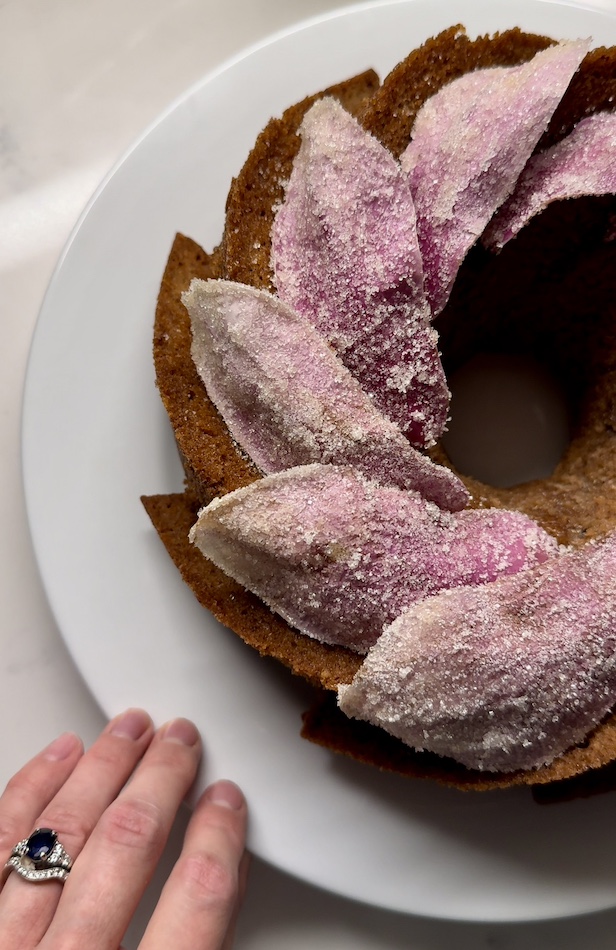
This year, after doing a “magnolia walk” around my neighborhood to collect some fresh petals, I also finally made The Black Forager’s recipe for Magnolia snap cookies (which taste like a cousin of ginger snap cookies).
Days later, I saw that internet food personality Aimee France recently used fresh-foraged magnolia flowers stuffed with lemon parsley goat milk ricotta for a new art installation in Italy– so it’s really a whole vibe right now with more and more people realizing you can eat this lovely springtime bloom.
Apparently, the Cotswold Forager Rob Gould favors eating a brownie wrapped in a magnolia petal, which I’ve never tried but it seems like a gorgeous application. So no, Mom: they aren’t poisonous. (But as with anything, do your research and make sure you have the right tree!)
Years ago, a Chinese medicine practitioner actually prescribed me a magnolia supplement for anxiety. Magnolia Bark contains a calming compound called honokoil, which is often used in medicine and the kind of anti-anxiety tinctures that became really fashionable during the herbalism renaissance about ~ten years ago. (Magnolia bark is hard to find as a stand-alone product, though, and I would only suggest getting magnolia bark from a trained herbalist, only. This is not a foraging account! Nor do I have any medical qualifications! I’m just letting you know this is a thing from a cultural standpoint. If you’re just a regular person who wants to cook with magnolia, then only use the flower petals.)
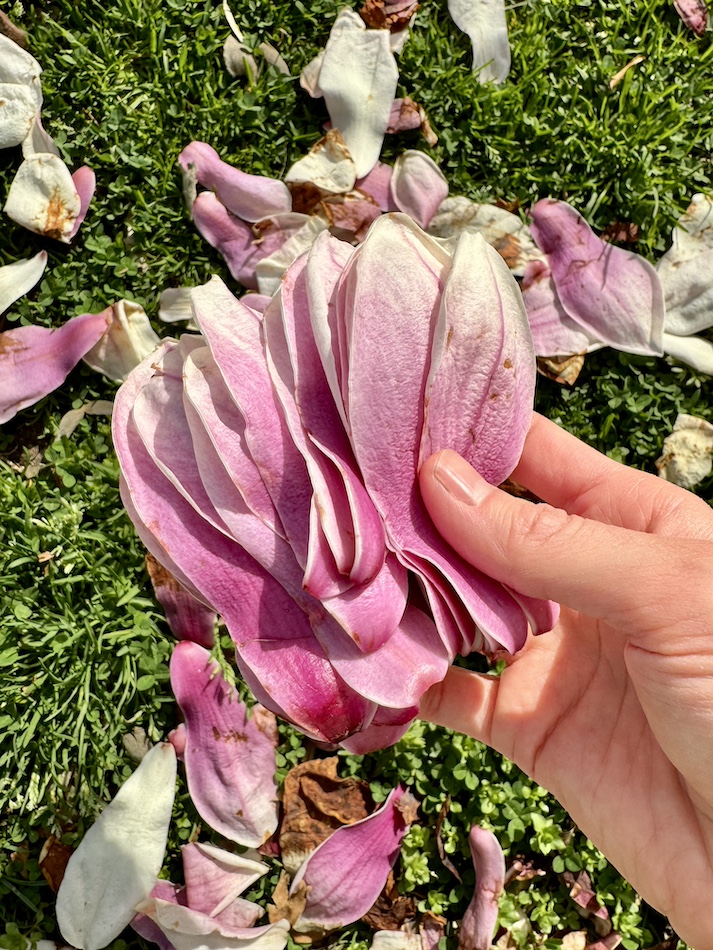
Apart from that, I love the look and timing of magnolia– I love how it blooms as the first sign of early spring, delighting the senses just when it seems like winter will never recede. And I love that people are getting to know different ways to understand this beautiful, lush tree, which always blooms so generously.
Magnolia, moreover, is a really magnificent tree, enduringly sturdy and ancient— it’s hard not to fall in love with the shower of fresh, ombre pink petals they leave on sidewalks every spring, as if to say: “You survived winter! That was hell! Here’s a shower of riotous beauty as your reward! Life is generous! Stop and inhale all this wonder and abundance!”
Sigh. Knowing that you can eat the flowers is just a fun bonus.
Cherry blossom season, moreover, usually gets all the attention this time of year, both in the East and in the West. But rest assured, magnolia is a spring tree worthy of your time. It’s one of the oldest species of flowering trees, and it’s been around since dinosaurs roamed the earth. (About 95 million years, as of this writing.)
Magnolia is in bloom for maybe the next ~week on the East Coast of the United States, as well as across most of Southern Europe. Again, the season is short, which is what makes it special. Look out for it on your next walk. I hope one of them makes you smile.
***
Below, check out some of our favorite, internet-loved recipes for magnolia-infused baked goods. The below magnolia spice cake recipe is adapted from The Wondersmith’s original caramel magnolia bundt cake recipe.
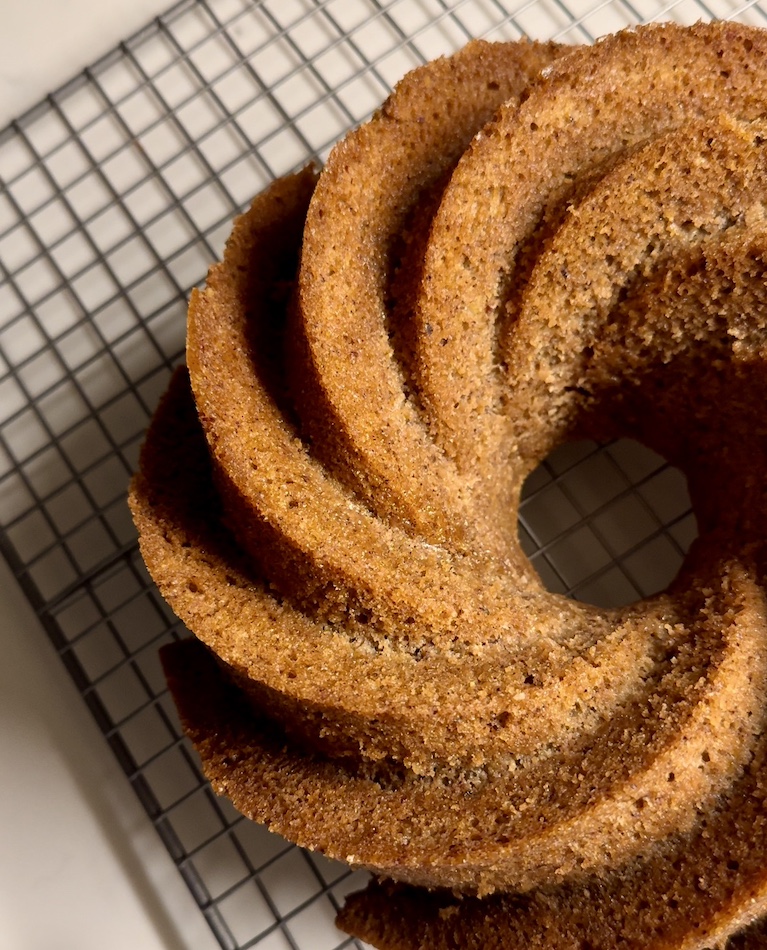
Magnolia Spice Cake Recipe
This super-moist, fragrant magnolia spice cake recipe is ideal for people baking with magnolia petals for the first time. It has a beautiful crumb that everyone I’ve served it to loves.
- 2/3 cup milk of choice
- 1 cup magnolia tepals (aka magnolia petals)
- 1 and 1/2 cup flour
- 1 and 1/2 cup almond flour
- 1/4 tsp ground dried ginger
- 2/3 cup butter, room temperature
- 1 and 1/2 cup granulated sugar
- 5 large eggs, room temperature
- 2 tsp baking powder
- 1 Tablespoon vanilla bean paste (or vanilla extract)
- 1 tsp sweet chickpea miso (or 1/4 tsp salt if you don’t have miso)
- Optional: 10-15 magnolia petals, for candying and decorating
Instructions
- Preheat oven to 375 degrees F (approximately ~190 degrees C). Generously grease and flour a 10-cup bundt pan.
- Blend the magnolia petals with your milk in a blender until completely smooth. There shouldn’t be any chunks or stringy bits left at all. Set aside.
- Beat the butter, sugar, vanilla, and miso together until creamed. Add the eggs, one at a time, beating until smooth, then stir in the magnolia petal milk.
- In a separate bowl, mix together the flour, almond flour, dried ginger, and baking powder. Then, pour the dry ingredients into the wet and mix until well combined. (Don’t worry about over-mixing, you can’t really do that here.)
- Bake for 50-60 minutes, until a toothpick or tester stuck into the center comes out clean. Test in multiple spots to be sure. Let the cake cool in the pan for 15 minutes before turning it out onto a metal rack to cool completely. If you want to decorate the cake with candied magnolia petals, see below.
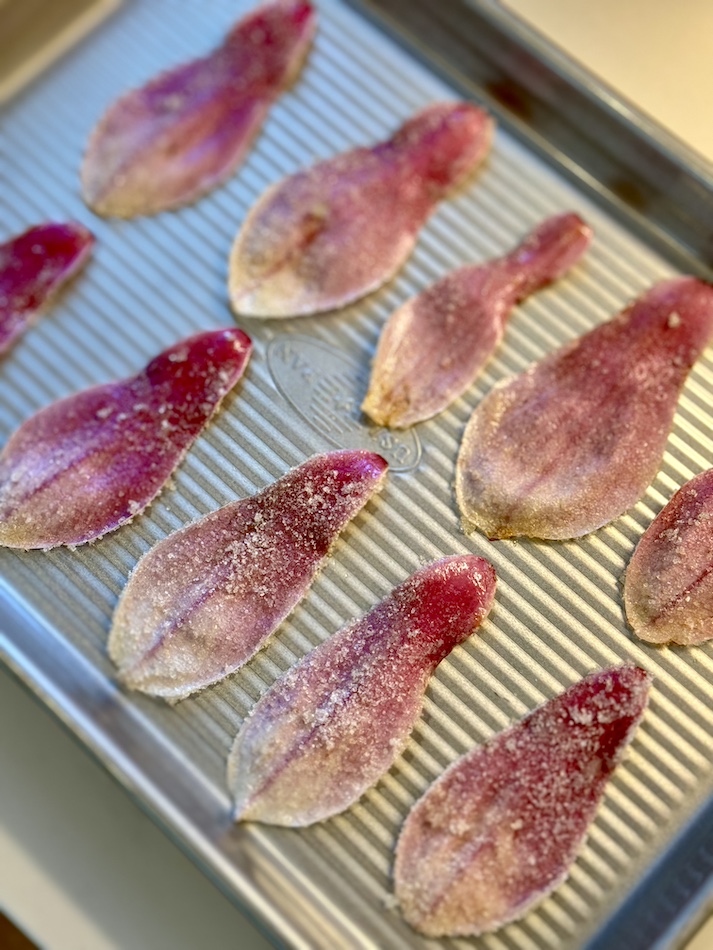
Candied Magnolia Petal Recipe (Optional, For Decorating Cake)
- 10-15 fresh magnolia petals
- 1 egg white
- 1/3 cup granulated sugar (the finer the better– if you have superfine granulated sugar, that is ideal)
Instructions
- Make sure your magnolia petals are completely dry.
- Whisk the egg white until smooth, then dunk or paint both sides of each petal with it and lay the tepals on a cookie sheet covered in sugar. Flip each petal until both sides are generously covered in sugar. Leave them drying in the sugared tray until your cake is completely cool. By then, the candied petals should be set. (The wetness should be gone, but they will still be flexible.)
- Arrange the petals on top of your cake however you like. Enjoy!
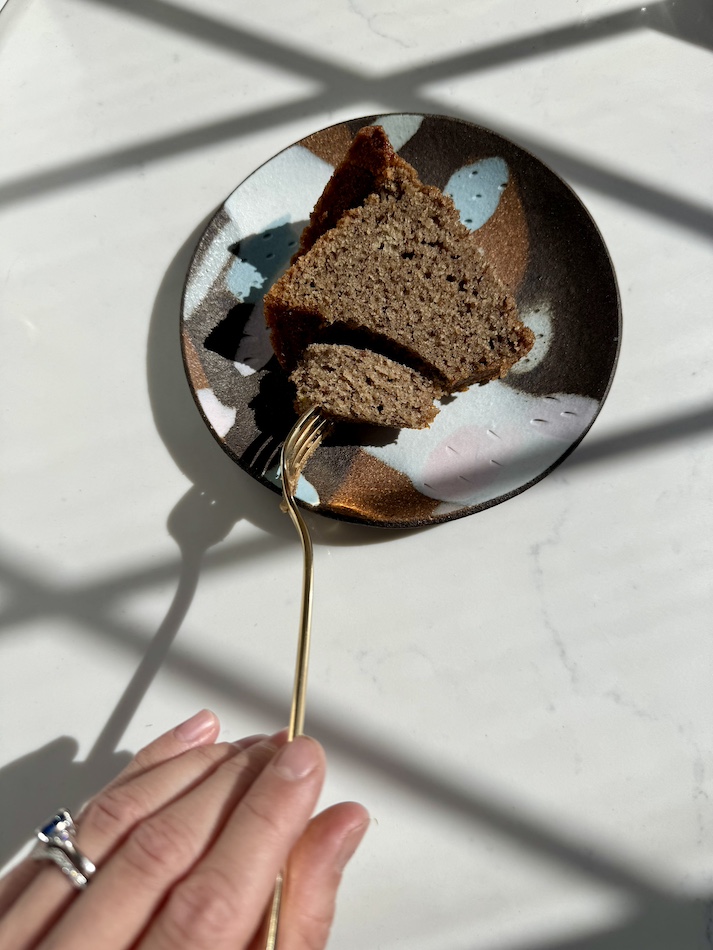
Some Other Cool Magnolia Recipes
As mentioned above, we love The Black Forager’s vegan Magnolia Snap cookie recipe, which is an easy dupe for ginger snap cookies made with magnolia-infused simple syrup.
^ To make magnolia simple syrup, melt sugar and water together in a saucepan until the sugar is completely dissolved, but not yet boiling. It should take about 5 minutes. Then, remove pan from heat and add your magnolia petals. Stir and cover, then let them steep for at least 1 hour.
During this time, the magnolia flavor will infuse the syrup. After 1 hour, pour the syrup through a sieve to strain out any petal debris and pour it into a glass jar. Store in the fridge for up to two weeks. Use this syrup in The Black Forager’s Magnolia cookie recipe above, or you can use it in place of maple syrup or to sweeten your coffee– whatever you like!
Finally, you can also pickle magnolia petals! Watch this video of British chef Jamie Oliver making pickled magnolia petals, which are akin to pickled ginger and can be used the same way (e.g., in sushi and Asian recipes, etc).
Now go out and enjoy the rest of this beautiful season!
***
Related: We love this Maple-Date Chesnut Milk Recipe— A local food lover’s alternative to hot chocolate made from fresh-roasted chestnuts. Bookmark it for next winter!
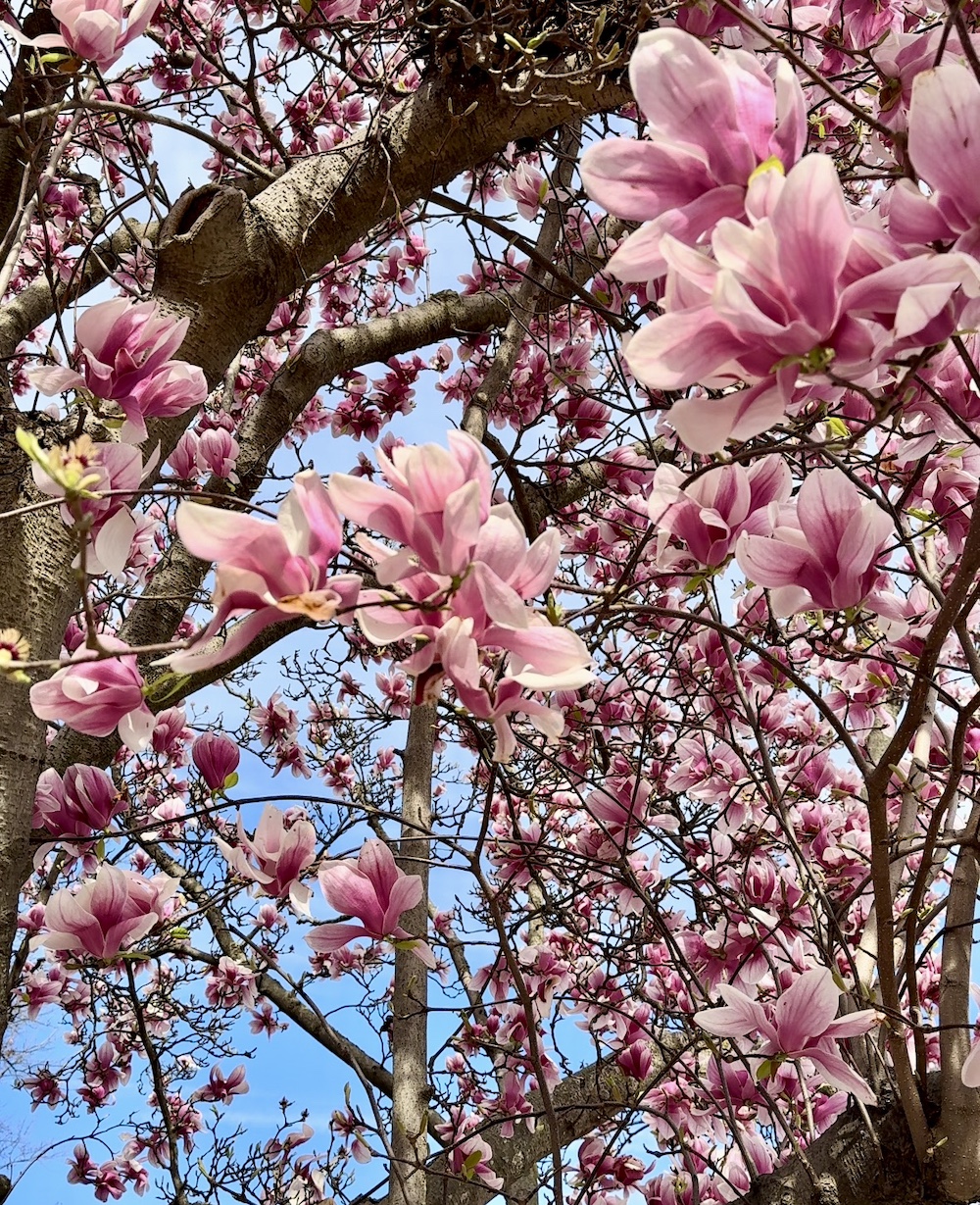
Leave a Reply